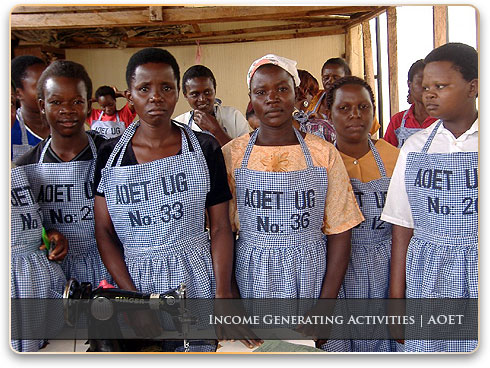Income Generating Activities
The organization provides income generating activities for the foster families to assist
them earn a living, raising money for their household expenses and supporting their
children.
The income generating projects:
- Encourage and create opportunities for those in the training homes to work to generate household income to meet their needs.
- Teach, train and equip those in the training homes with various skills including small scale farming skills providing another source of income and food for the family.
- Engage those in the training homes learning developmental skills reducing opportunities for idleness and involvement in risky behavior.
- Generate administration income for the training village;
There is already a cultural imbalance restricting the value of women in African society.
When the husband is the only bread winner in a family, the imbalance is often aggravated
resulting in the woman being sidelined in the issues pertaining to the development of the family.
Income generating projects give both the husband and wife opportunities to
participate in income generation for the household. Further, all members of the foster
family are able to learn skills on the village’s income generating projects allowing them to be better qualified for or create their own employment in the future.
Income generating activities that are provided at the training village include:
- Farming;
- Tailoring;
- Block / brick making;
- Metal works and fabrication;
- Carpentry.
Future activities may include:
- A larger poultry farm both for eggs and meat;
- A larger piggery farm;
- A vegetable farm and a flower garden/ farm;
- A formal block making workshop;
- A formal wood and metal works workshop.
These projects should be self-sustaining within twelve months of initial setup.
Costs and sustainability
During the four year stay, each foster family will be engaged in a savings program that allows them to save enough to build their own home and sustain their expenditures. An agreed percentage of the money that is earned by the couple is saved regularly in the savings program
To facilitate this, AOET is giving free medical care, housing and utility bills (water
and lighting). The family meets its own food, cooking fuel and any other utility costs like telephone....
The foster family is accountable to the organization and will provide documentation of
the savings. The banking institution helps support this program by instituting guidelines
for the deposit and withdrawal of funds. AOET works with these families toward their success at budgeting, spending and saving for their future family home/property.
After families have relocated, AOET continues to work with the family to obtain the children’s educational costs and continue to offer psychosocial support.The household is actually equipped to manage their own household expenditures.
As a result, every four to five years, hundreds of orphans and vulnerable children will be integrated into permanent foster families and stabilized.
